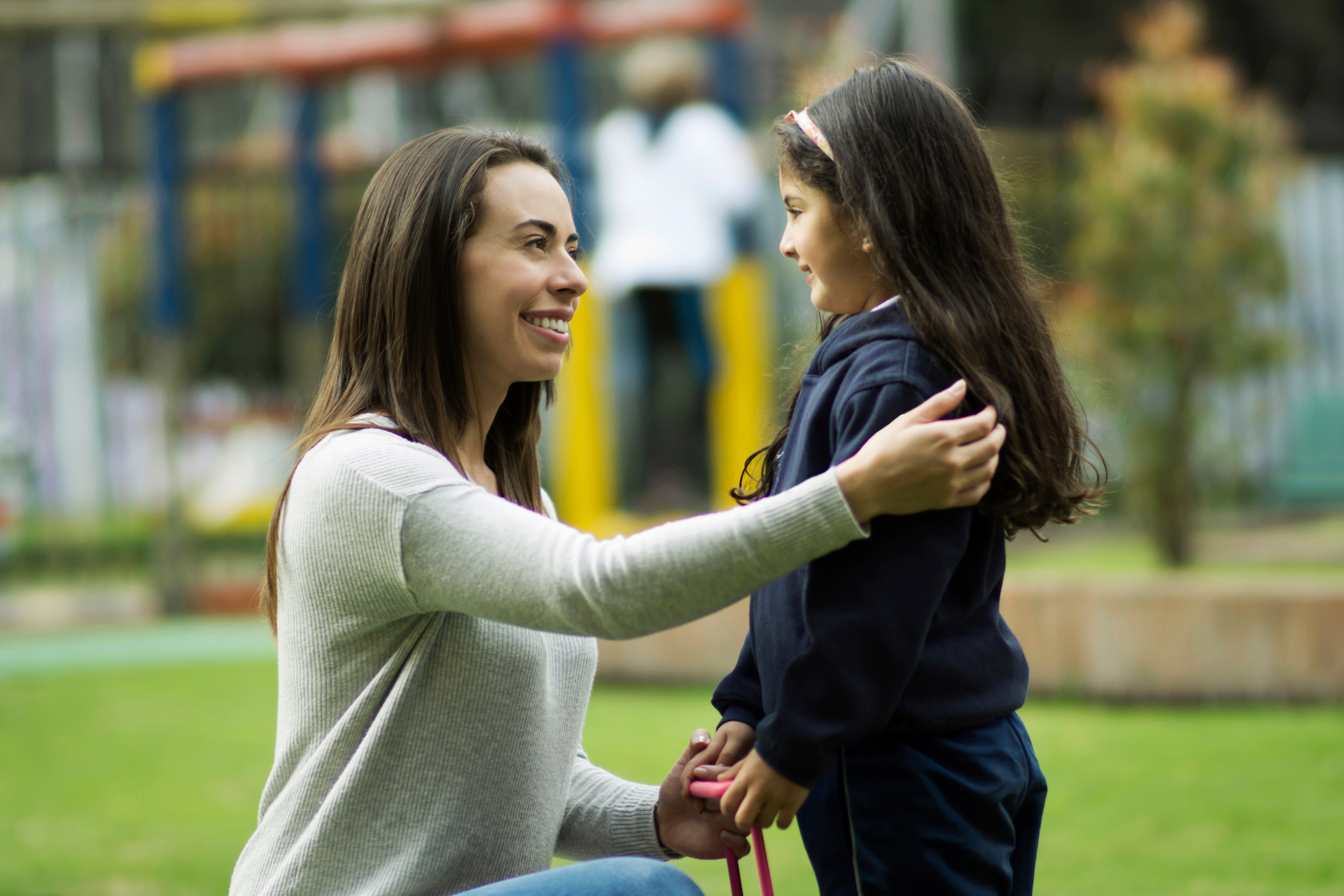By Karen Nemeth, EdM
Every young child’s day is filled with learning at school and in their neighborhood. Research shows that conversations you have with your child help them remember and use what they learned in school. These conversations are helpful whether you speak English or any other language.
A child with a strong foundation in their family language is likely to be successful at learning English as they grow. That’s because conversations in the home language are filled with details and explanations families use when they talk together. Here are some great ideas to help your child talk with you about what they are learning in school so you can continue the learning as you experience your neighborhood together.
First, find out about what your child learned in school today:
- Ask your child a specific question such as “What song did you sing in school?” or “What did you draw or color or make in school today?” or “What was the best story your teacher read to you today?”or “What did you do with numbers today?”
- Participate in the school’s text messaging or email service. These are usually available in many languages. Teachers often send messages about what children learned in school that day.
- Read the school newsletters and notices. Ask for translated materials if you need them so you can read all about what’s happening in your child’s day.
Then, find examples of that school learning in your neighborhood and encourage your child to talk and learn more about those new ideas:
- Talk about the stories your child enjoyed at school, then visit the library to find the same stories to read together at home – or stories that have the same kinds of characters.
- Ask your child to teach you the songs they sing at school. Search for them on your smartphone so you can discuss what the song is about.
- If your child practiced writing words or letters at school, make a game of trying to find those words or letters in the neighborhood.
- If your child made some kind of art or craft at school, talk about the colors they used and find those colors in your neighborhood. Try making some art at home with crayons, paints, or markers.
- If your child is learning about adding numbers together, let them help you count up the items you need when you stop at a store. For example, you might say you have two eggs at home but you need five eggs to make flan. Two plus what equals five? If you want to buy an apple for every member of your family, how many apples will you need?
With so many interesting things happening in the neighborhood, there will always be something to talk about and to learn about together! When you help your child practice what they learn outside of school, you are strengthening their understanding and getting them ready for the next step. If you speak English at home, use English together. If you use another language, have great conversations in your home language.
You don’t have to be a teacher to support your child’s education. You just have to be interested in having conversations about everyday things!



